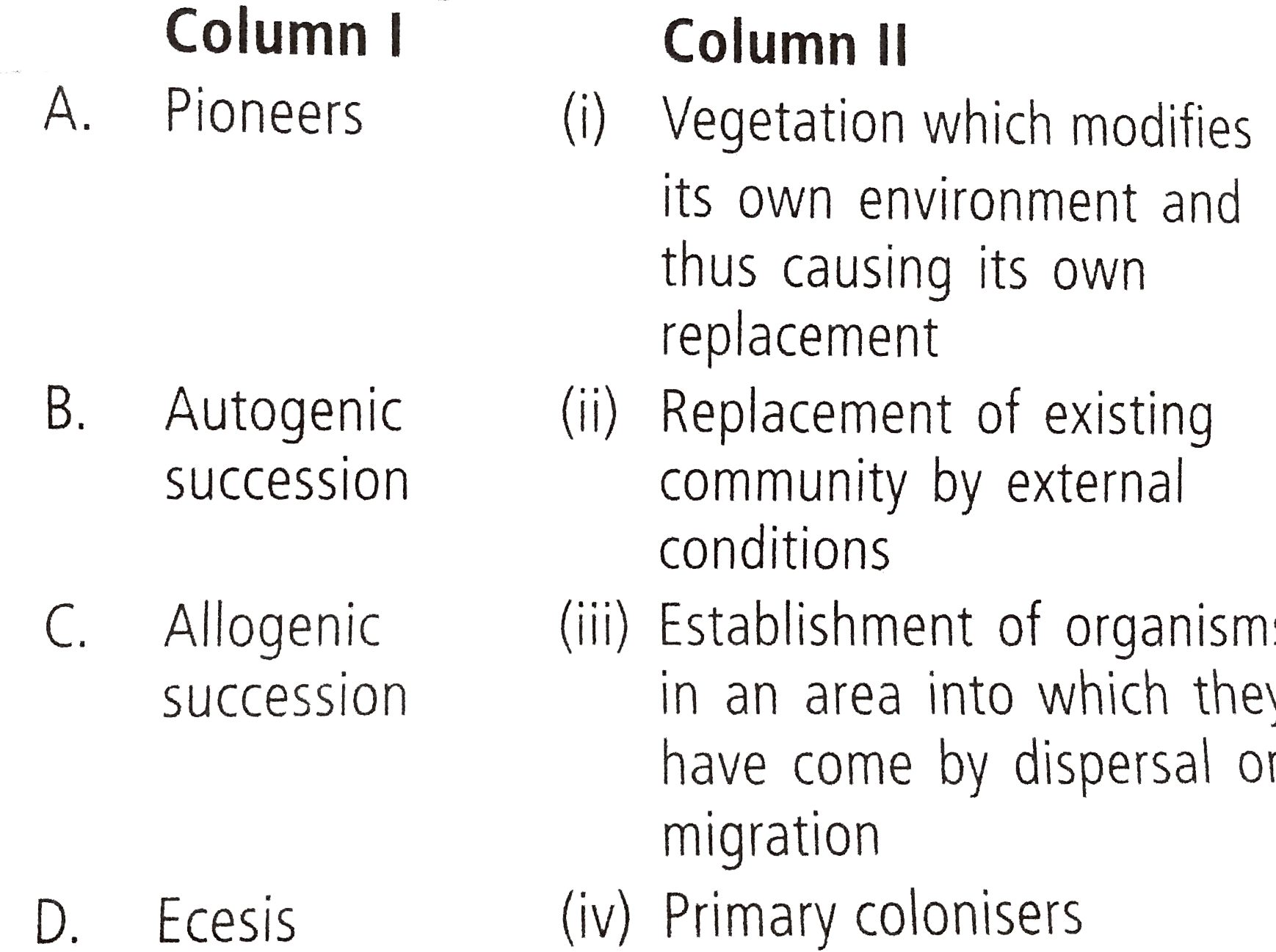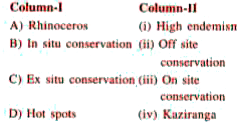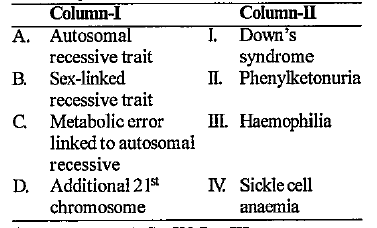Match column I with column II and select the correct option from the given codes.
Column IColumn IIA. Pedicel(i) Reduced leafB. Peduncle(ii) Stalk of the flowerC. Bract(iii) Stalk of the leafD. Petiole(iv) Infloresences axisSolution in Odia
a) A-(ii),B-(iv),C-(i),D-(iii)
b) A-(iii),B-(iv),C-(i),D-(ii)
c) A-(iii),B-(ii),C-(i),D-(iv)
d) A-(ii),B-(iii),C-(i),D-(iv)
The correct Answer is:A
Step by step video & image solution for Match column I with column II and select the correct option from the given codes. {:("Column I",,"Column II"),("A. Pedicel",,"(i) Reduced leaf"),("B. Peduncle",,"(ii) Stalk of the flower"),("C. Bract",,"(iii) Stalk of the leaf"),("D. Petiole",,"(iv) Infloresences axis"):} by Biology experts to help you in doubts & scoring excellent marks in Class 11 exams.
Updated on:21/07/2023Similar Questions
Mathc column I with column II and select the correct option from the given codes.

View SolutionMatch column I and II and select the correct option from the given codes.
View SolutionMatch column I with II column II and select the correct option from the given codes . {:("Column I","Column II"),(A."Griffith",(i)"Lac operon"),(B."Hershey and Chase",(ii)"Semi-conservative DNA replication"),(C."Meselson",(iii)"Transduction"),(D."Jacob and Monod",(iv)"Transformation"):}
View SolutionMatch column I with II column II and select the correct option from the given codes .
View SolutionMatch Column I with Column II. (a) Physalia (Column I),(i) Devil fish (Column II),(b) Ascaris (Column I),(ii) King crab (Column II),(c) Limulus (Column I),(iii) Roundworm (Column II),(d) Octopus (Column I),(iv) Portuguese man of war (Column II)
View SolutionMatch Column-I with Column-II and select the correct option from the codes given below. Column-1

View SolutionMatch column-I with column-II and select the correct option using the codes.

View SolutionMatch Column-I with Column-II and select the correct option using the codes given below
Column-IColumn-II(A)Pistils fused together(i)Gametogenesis(B)Formation of gametes(ii)Pistillate(C)Hyphae of higher Ascomycetes(iii)Syncarpous(D)Unisexual female flower(iv)Dikaryotic
View Solution
